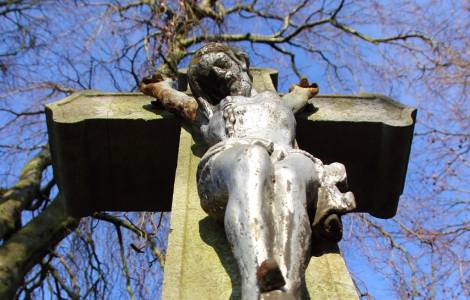
Vatican City (Agenzia Fides) - "There is a strong bond that already unites us which goes beyond all divisions: it is the testimony of Christians from different Churches and traditions, victims of persecution and violence simply because of the faith they profess. The blood of these martyrs will nourish a new era of ecumenical commitment, a fervent desire to fulfill the last will and testament of the Lord: that all may be one." These words, addressed by Pope Francis to the members of the Anglican-Roman Catholic International Commission in April 2015, summarize the focus of the great ecumenical celebration (the only one organized in Rome as part of the Jubilee celebrations, as the organizers specify) on Sunday, September 14, in memory of the new martyrs and witnesses of the Christian faith.
In 2000, a similar celebration took place in the Colosseum under the presidency of John Paul II. On September 14, Pope Leo XIV will be present at the celebration in the Basilica of St. Paul Outside the Walls. This location was not chosen by chance, as Archbishop Fabio Fabene, President of the Commission for the New Martyrs and Secretary of the Dicastery for the Causes of Saints, explained to Fides: "The Basilica of St. Paul was chosen because it is the burial place of the Apostle of the Gentiles, at whose tomb representatives of various Christian denominations gather every year on January 25 to pray at the conclusion of the Week of Prayer for Christian Unity." The date was also not chosen by chance: "September 14 is the Feast of the Exaltation of the Holy Cross, a feast celebrated by various Christian denominations to commemorate the discovery of the True Cross by Saint Helena, mother of Emperor Constantine."
While 25 years ago, the Colosseum primarily commemorated the Christians who lost their lives at the hands of political regimes, dictatorships, and wars in the 19th and 20th centuries, this coming Sunday's celebration will commemorate all those who, regardless of their Christian denomination, gave their lives to bear witness to their love and faith in Christ.
The list of all the names will be published in the coming months. However, the total number has already been announced: 1,734. These are individuals whose stories, along with the socio-political context, have been studied by the "Commission for New Martyrs - Witnesses of the Faith," which Pope Francis, in anticipation of the Holy Year 2025, entrusted with the task of cataloging all those who, since the year 2000, "have shed their blood to confess Christ and his Gospel." In doing so, it also draws on the dossiers on the murdered pastoral workers published annually by Fides.
The eleven-member commission has compiled data from the past 25 years, and the 1,734 new martyrs are now being added to the long list published in 2000. The names included in this new list were reported by the particular Churches, religious communities, lay movements, or associations that submitted various documents to the commission. The parameters and methods used as a distinguishing feature differ, as the commission itself clarifies, from those normally used by the Dicastery for the Causes of Saints in the canonization process.
During a press conference, Professor Andrea Riccardi, Vice President of the Commission, listed the figures by continent: 304 in the Americas; 153 in Europe, of which 43 were killed on the Old Continent and 110 Europeans killed on mission outside Europe; 277 in the Middle East and the Maghreb, where "there is a large number of non-Catholics, especially Protestants and Christians of the Eastern Churches"; 357 in Asia and Oceania, "where most Christians died while praying." The list includes the 167 Catholic faithful killed in a church in Sri Lanka on Easter Sunday (see Fides, 3/5/2025). 643 Christians were killed in Africa, the country "where most Christians die." The causes of these violent deaths are varied: drug trafficking, deforestation, resource exploitation, and the mafia in America. Here, "Christians are eliminating each other to eliminate those who protect the weakest and the environment, while in Africa, Christians are dying due to Islamist attacks, but also for ethnic and political reasons," Riccardi continued, specifying that the reported figure "is only the tip of the iceberg. In many areas, especially the most remote, not everyone is reporting what is happening, and it is difficult to find documents."
The celebration next Sunday is dedicated to these "martyrs": a Liturgy of the Word presided by Pope Leo XIV together with representatives of various Christian denominations, including a representative of the Moscow Patriarchate, whose theme will be the passage from the Gospel on the Beatitudes. The first reading, however, will be from Chapter 3 of the Book of Wisdom, dedicated to the death of the righteous. This will be followed by the chanting of Psalm 120 and some verses from Paul's First Letter to Timothy. After the homily, the ecumenical prayer will continue with the lighting of several lamps, one for each prayer read, symbolizing the light of the Resurrection, which will be placed before the Cross. The conclusion will be the profession of faith in commemoration of the 1700th anniversary of the Council of Nicaea, and the Lord's Prayer. (F.B.) (Agenzia Fides, 8/9/2025)